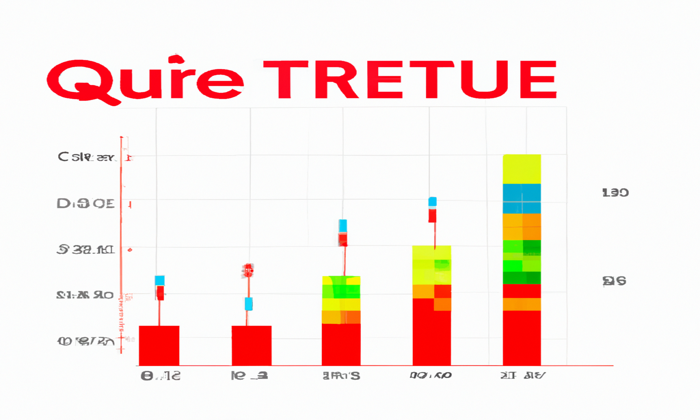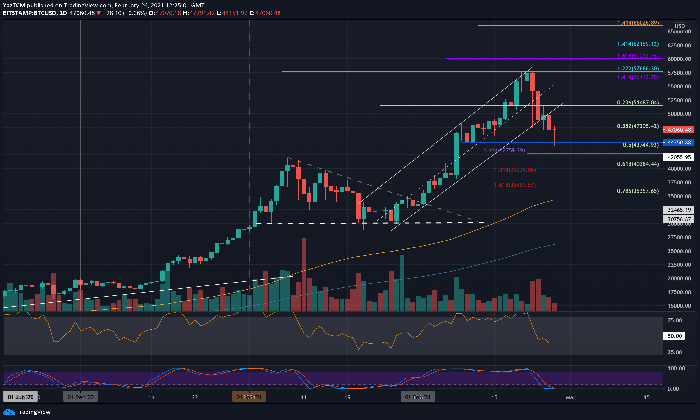The Ethereum Pectra upgrade has recently faced significant challenges, particularly on the Sepolia testnet, where it was targeted by an unidentified attacker. According to a report, this breach prompted Ethereum developers to initiate a “private fix” to mitigate the upgrade-related issues that had emerged. As highlighted by developer Marius van der Wijden, the problem stemmed from an overlooked “edge case” related to the ERC-20 standard, which allowed an attacker to repeatedly exploit zero-token transfers, complicating the network’s functionality. Despite these setbacks, the Ethereum developer response ensured that finalization was never lost, focusing efforts on addressing security vulnerabilities associated with the Pectra upgrade. As developers navigate through this critical phase, they remain committed to refining EIP-6110 and restoring confidence in the network’s stability and resilience against attacks.
The Ethereum Pectra upgrade, a pivotal enhancement aimed at bolstering the Ethereum ecosystem, has encountered significant obstacles on its testnet, specifically the Sepolia environment. This upgrade strives to improve Ethereum staking and boost layer 2 scalability while integrating vital improvements through various EIPs. Unfortunately, the recent attack has thrown a wrench in the rollout, prompting developers to adopt urgent measures to rectify the issues. The complexity of the situation has highlighted the importance of scrutinizing Ethereum upgrade issues to ensure robust security and performance across its platforms. As developers work to establish a swift response, the focus remains on not only overcoming the current challenges but also paving the way for future advancements.
Unpacking the Ethereum Pectra Upgrade Issues
Ethereum’s Pectra upgrade faced significant technical challenges during its deployment on the Sepolia testnet. As the upgrade was rolled out on March 5, 2025, it quickly became clear that developers were confronted with error messages from their geth nodes. This alarming situation was exacerbated by a notable increase in the mining of empty blocks, which indicated a deeper problem within the network. Following a thorough investigation, it was revealed that a previously overlooked edge case in the ERC-20 standard had been exploited, leading to a series of zero-token transfers that triggered disruptive errors. This incident spurred developers to respond rapidly to safeguard the network’s integrity and performance.
The issues encountered during the Pectra upgrade highlight the complexities of maintaining security and functionality in blockchain networks. EIP-6110, which was intended to standardize the processing of logs from the deposit contract, instead contributed to the complications when the upgrade went live. Developers initially thought that a trusted validator might be at fault, but they soon uncovered that the source of the disruptions was a malicious actor exploiting the system through clever manipulation of zero-token transactions. This reinforced the need for robust testing and debugging processes prior to initiating major upgrades, especially in a landscape where even the smallest vulnerabilities can lead to significant challenges.
Ethereum’s Developer Response to Security Threats
In the wake of the attack during the Pectra upgrade, Ethereum developers had to act swiftly to mitigate the impact of the exploitation. The response included implementing a ‘private fix’ that solely targeted a select group of DevOps nodes that represented about 10% of the network. This decision was fueled by concerns that the attacker was surveilling developer communications, prompting a more discreet approach to the situation. The importance of nimbly responding to security threats is paramount in the blockchain ecosystem, where every second counts in maintaining network functionality and user trust.
Ethereum’s approach to addressing the security threat reinforces the necessity for constant vigilance within the development community. Their calculated response not only restored full block production but also highlighted a proactive stance against potential vulnerabilities in future upgrades. Security measures and strategies must evolve continuously, particularly with upgrades like Pectra that introduce numerous Ethereum Improvement Proposals (EIPs) that could potentially affect various aspects of the network’s functioning. Following this incident, it is likely that the Ethereum community will emphasize more rigorous pre-upgrade testing and contingency planning to safeguard against similar occurrences.
Examining the Implications of EIP-6110
EIP-6110 plays a crucial role in the landscape of Ethereum upgrades, particularly as seen in the technical challenges faced during the Pectra upgrade. This improvement proposal aimed to establish standardized logging processes for the deposit contract, ensuring consistency across transactions. However, the unfortunate exploitation of its specifications pointed out flaws that are not merely theoretical but practical. The incident serves as a reminder of the critical need for developers to thoroughly assess EIP implementations against possible attack vectors.
In addition to enhancing logging processes, EIP-6110 signifies the ongoing evolution of Ethereum’s infrastructure towards scalability and security. While the enhancements intended by this EIP are significant, the recent incident serves as a cautionary tale, emphasizing that new proposals must undergo extensive testing, particularly in public environments like the Sepolia testnet before they are deployed on the mainnet. As Ethereum continues to grow, the lessons learned from the Pectra upgrade and the implications of EIP-6110 will undoubtedly influence future development strategies and testing protocols.
The Future of Ethereum Upgrades Post-Pectra
The aftermath of the Pectra upgrade challenges will likely shape the future of Ethereum upgrades for months to come. As the community regroups and analyzes the reported issues, developers are already considering a more cautious approach to upcoming upgrades. The need for extended testing and contingency measures has become evident, especially regarding potential vulnerabilities that could be exploited by malicious entities. By addressing these challenges, Ethereum can enhance its resilience against future threats while ensuring that user trust remains intact.
Moreover, the lessons learned from Pectra will potentially lead to strategic adjustments in how Ethereum implements subsequent upgrades. Prioritizing transparency and communication within the developer community is essential, ensuring that any emergent issues can be rapidly addressed without letting them escalate. The prospect of future upgrades hinges on collaboration and foresight, as the Ethereum ecosystem continues to evolve, aiming to improve upon its existing frameworks while maintaining security and operational excellence.
Impact of the Pectra Upgrade on Layer 2 Scaling
The Pectra upgrade’s introduction set off a domino effect concerning Ethereum’s layer 2 scaling solutions. As developers aimed to enhance staking mechanisms and network capacity, the simultaneous deployment of the upgrade began to raise important questions about stability and performance, especially in the context of integrating layer 2 technologies. Effective scaling is vital for Ethereum as it aims to accommodate a growing number of users and decentralized applications (dApps); therefore, any setback during the upgrade rollout can have significant ramifications for how these solutions are perceived and adopted in the broader ecosystem.
Layer 2 scaling solutions rely heavily on the secure functioning of the main Ethereum network. With the Pectra upgrade highlighting vulnerabilities within its current design, the developers must prioritize integrating strong safeguards in future updates that will not compromise the network’s scalability aspirations. The balance between innovation and security can be delicate; however, substantial effort in enhancing both will be crucial for Ethereum to maintain its position as a leader in the blockchain space and optimize user experience across all dApps and platforms.
Security Concerns Surrounding Ethereum’s Infrastructure
Security is a paramount concern for any blockchain network, and the difficulties faced during the Pectra upgrade underscore this reality for Ethereum. As developers raced to implement fixes in the face of an identified attacker, it became apparent that the existing infrastructure was not entirely immune to threats that could exploit even small loopholes. This incident not only affected the immediate functionality of the Sepolia testnet but also raised broader questions about how well Ethereum can protect its protocol against unforeseen vulnerabilities during upgrades.
Furthermore, the continuous evolution of the Ethereum protocol necessitates a constant reassessment of its security architecture. Developers must prioritize implementing robust validation mechanisms and responsive strategies to combat potential threats without hindering network performance. As Ethereum navigates complex upgrades, the collective knowledge from incidents like the Pectra upgrade will fuel future efforts to enhance the platform’s resilience, ensuring security remains at the forefront as the network evolves.
Role of the Sepolia Testnet in Upgrade Testing
The Sepolia testnet has played a crucial role in testing Ethereum’s updates, and the recent Pectra upgrade incident highlights its significance even further. By deploying such upgrades on a testnet before they are introduced on the mainnet, developers can identify and address issues in a controlled environment, reducing risks for end users. This testing process, while essential, also proves to be vulnerable to exploits, as shown in the Pectra case, where an attack on the testnet temporarily disrupted its operations.
As a result, developers must continue to refine their approach to utilizing the Sepolia testnet. Enhanced protocols for reporting bugs and ensuring comprehensive security assessments will be integral to minimizing potential disruptions in future upgrade cycles. The lessons learned from Pectra stress the importance of thorough testing combined with vigilant management of the developer community’s communications, aiding in the growth of a more secure and resilient Ethereum network.
Understanding Ethereum’s Improvement Proposals (EIPs)
Ethereum’s Improvement Proposals (EIPs) are vital to the network’s evolution, providing a structured way for developers to suggest changes and enhancements. The proliferation of these proposals, as seen with the introduction of EIP-6110 alongside the Pectra upgrade, reflects the dynamic and collaborative nature of the Ethereum ecosystem. This process allows for ongoing innovation while ensuring that each proposal can be carefully reviewed and debated by community stakeholders, thus maintaining a high standard of quality and security in the protocol’s development.
However, the complexities surrounding EIPs also mean that each proposal must be thoroughly analyzed against potential vulnerabilities that may arise during implementation. The challenge developers face is ensuring smooth upgrades while also addressing unforeseen issues that emerge from these new integrations. As the Ethereum network evolves with each upgrade, the significance of EIPs will continue to rise, emphasizing the importance of community collaboration and rigorous testing to reinforce both security and functionality.
The Implications of Zero-Token Transfers in Ethereum’s Smart Contracts
Zero-token transfers in Ethereum’s smart contracts have emerged as a significant point of concern, particularly following the Pectra upgrade incident where they were exploited to cause network disruptions. These types of transactions, which allow anyone to send a transfer of zero tokens, can inadvertently trigger events within the contract that may lead to unexpected behaviors. The malicious use of these transfers during the recent upgrade demonstrates the importance of strict validation mechanisms in smart contracts to prevent exploitation and operational failures.
Developers must take proactive measures to consider all edge cases when designing smart contracts, including how zero-token transfers are treated. This emphasizes a broader need for the Ethereum community to engage in ongoing dialogue about potential vulnerabilities that can arise from seemingly benign transaction types. The demonstrated exploitability of the zero-token transfer suggests that future enhancements to Ethereum’s protocol should include stronger safeguards that anticipate and mitigate risks, ensuring the overall health and performance of the network.
Frequently Asked Questions
What is the Ethereum Pectra upgrade and its purpose?
The Ethereum Pectra upgrade aims to enhance ETH staking, improve layer 2 scalability, and increase network capacity. This upgrade introduces 11 Ethereum Improvement Proposals (EIPs) and is the first significant upgrade since the Dencun upgrade launched in March 2024.
What were the main issues faced during the Ethereum Pectra upgrade on Sepolia testnet?
During the Ethereum Pectra upgrade on the Sepolia testnet, developers encountered technical issues, including a surge in empty blocks mined due to a bug related to EIP-6110. This bug was exploited by an unknown attacker through zero-token transfers, causing transactions to be rejected.
How did Ethereum developers respond to the upgrade issues during Pectra on Sepolia testnet?
In response to the issues during the Ethereum Pectra upgrade on the Sepolia testnet, developers implemented a ‘private fix’ to manage the impact of the attack. They filtered out transactions interacting with the deposit contract to restore normal operation.
What role did EIP-6110 play in the Ethereum Pectra upgrade issues?
EIP-6110 played a crucial role in the Ethereum Pectra upgrade issues by requiring uniform processing of logs from the deposit contract. A bug associated with this EIP led to unexpected events that caused nodes to mine only empty blocks.
Did the Ethereum Pectra upgrade affect the mainnet?
No, the issues experienced during the Ethereum Pectra upgrade were confined to the Sepolia testnet. Ethereum developers confirmed that the mainnet was unaffected, as the token-gated deposit contract on Sepolia differed from that of the Ethereum mainnet.
What preventive measures were taken by Ethereum developers during the attack on the Pectra upgrade?
To prevent ongoing issues during the attack on the Ethereum Pectra upgrade, developers rolled out a ‘private fix’ targeting select DevOps nodes, which helped mitigate the impact of the attacker exploiting the deposit contract during the upgrade.
What lessons were learned from the Ethereum Pectra upgrade incident on Sepolia?
The Ethereum Pectra upgrade incident on Sepolia highlighted the importance of anticipating edge cases in smart contracts and the need for thorough testing before major upgrades to prevent similar exploits in the future.
How will the Ethereum Pectra upgrade be tested before moving to the mainnet?
Following the issues identified during the Sepolia testnet rollout, developers have decided to postpone the Ethereum Pectra upgrade for additional testing and debugging to ensure a smooth deployment on the mainnet.
| Key Points |
|---|
| Ethereum’s Pectra Upgrade launched on Sepolia testnet on March 5, 2025. |
| The upgrade faced an attack exploiting a neglected edge case causing technical issues. |
| An attacker sent zero-token transfers to the deposit contract, triggering repeated errors. |
| Developers issued a private fix to resolve complications related to the deposit contract bug. |
| Despite issues, Ethereum never lost finalization and the problem was confined to Sepolia. |
| The Pectra upgrade aims to enhance ETH staking, layer 2 scalability, and network capacity. |
| It introduces 11 Ethereum Improvement Proposals (EIPs) following the Dencun upgrade of March 2024. |
Summary
The Ethereum Pectra upgrade, launched on the Sepolia testnet, encountered significant challenges due to an attack that exploited a vulnerability within the deposit contract. Although developers swiftly implemented a private fix to mitigate the issues, the incident compelled a delay in the upgrade’s rollout for further testing. This upgrade, crucial for improving staking, scalability, and network performance, is expected to solidify Ethereum’s infrastructure, marking a significant development in its evolution.
The Ethereum Pectra upgrade is set to revolutionize the Ethereum blockchain, as it underwent its initial deployment on the Sepolia testnet, albeit facing unexpected challenges. On March 5, during the upgrade rollout, an unidentified attacker exploited a flaw in the deposit contract, leading to an influx of errors and empty block mining. Ethereum developers, including Marius van der Wijden, responded swiftly to this incident, implementing a “private fix” to curb the attack, which involved filtering out zero-token transfers that activated the issue. This upgrade, coupled with EIP-6110, aims to optimize Ethereum’s staking and improve layer 2 scalability, despite the temporary setbacks. As developers look to finalize security measures, the Ethereum community is keenly observing the outcome of the Pectra upgrade and how it addresses prior Ethereum upgrade issues.
In recent developments, the Ethereum Pectra upgrade, aimed at enhancing the network’s functionality and scalability, made its debut on the Sepolia testnet. This significant upgrade faced immediate complications due to an exploit by a malicious actor, causing Ethereum’s developers to take urgent actions to restore stability. With the incident centering around technical errors linked to Ethereum Improvement Proposal EIP-6110, there has been a considerable focus on the security of the upgrade and how it affects overall network operations. The developer response highlighted the complexities involved in implementing such upgrades, and many within the Ethereum community are eager to see how these evolving dynamics will shape the future of Ethereum’s blockchain technology.














Leave a Reply